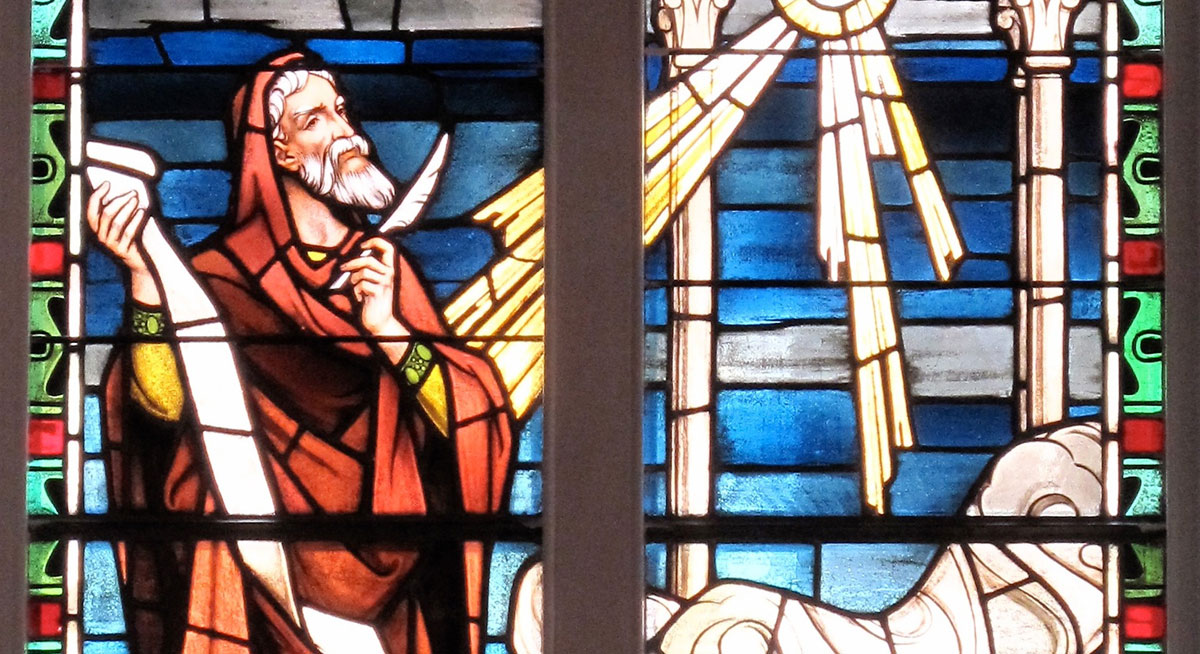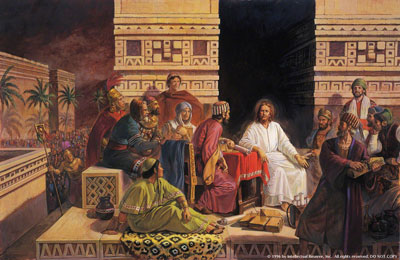
The Know
Even casual readers of the Book of Mormon are sure to notice: “Book of Mormon prophets … quoted extensively from Isaiah.”1 This tradition begins with the very first prophet-writer, Nephi, who, of all Book of Mormon prophets, used Isaiah most frequently. As Nephi read the words of Isaiah, he may have developed a personal affinity to Isaiah, who Nephi said “saw my Redeemer, even as I have seen him” (2 Nephi 11:2). Nephi saw in Isaiah a congenial prophet who had seen much of what he himself had seen in his own sweeping vision (1 Nephi 11–14).2
Abinadi, too, seems to have personally identified with some of Isaiah’s writing, experiencing himself what it is like to be “despised and rejected of men” (Mosiah 14:3; Isaiah 53:3).3 In addition to those who quoted Isaiah extensively, many other Book of Mormon prophets seem to have subtly quoted, paraphrased, and alluded to Isaiah’s words.4
When the resurrected Savior ministered to the Nephites, He also quoted from Isaiah.5 The risen Lord then made an unprecedented endorsement: “great are the words of Isaiah” (3 Nephi 23:1; cf. 20:11).6
Great could mean a variety of things. In Hebrew, gadol (“great”) “refers to things that are large in size, weight, or number; … to things of great significance or influence; to extraordinary events; and to God.”7
Isaiah’s words could thus be called great because his is the largest book in the Old Testament, because his prophecies are the most expansive and far-reaching, or because they are the most profound, sublime, and exalted. In line with this possibility, the Savior explained that Isaiah “spake as touching all things concerning my people” (3 Nephi 23:2, emphasis added).
Like Nephi and Abinadi, the Savior may also have had more personal reasons for calling Isaiah great. Biblical scholars have found that Isaiah “accounts for most of the [Old Testament] quotations and allusions in the [New Testament].”8 Additionally, “More than half the [Old Testament] quotations attributed to Jesus himself are from Isaiah, suggesting that he identified closely with the book and possibly also with the prophet himself.”9
Though they look very different in English, the very names Isaiah and Jesus “are similar in form and meaning.”10 The Hebrew names are Yesha‘yahu (Isaiah), meaning “salvation/deliverance of Yahweh [Jehovah],” and Yeshua (Jesus), meaning “the Lord is salvation, deliverance, help.”11 Finally, while the subject continues to be debated in some circles, many scholars would agree that “Isaiah’s Servant was central to Jesus’ self-understanding.”12
This closeness and self-understanding may be evidenced in 3 Nephi, where immediately after commanding the Nephites to “search” the great words of Isaiah, which “have been and shall be” fulfilled, the Savior then commanded: “Therefore give heed to my words” (3 Nephi 23:1–4, emphasis added). As one Latter-day Saint scholar noticed, “Jesus positions his teachings to the Nephites as parallel to Isaiah.”13
The Why
Isaiah’s writings continue to have a powerful impact on Jews, Christians, and Latter-day Saints throughout the world. Terry B. Ball noted:
With his prophecies preserved not only in the Old Testament, but also in the New Testament, the Book of Mormon, and the Doctrine and Covenants, Isaiah’s ministry continues to bless and instruct students of the scriptures.14
The pervasive presence of his words in all of the Standard Works is a testament of their “everlasting worth to all people” in all ages.15 Indeed, the words of Isaiah are great in terms of impact and influence.
While those of many faith traditions have recognized the great worth of Isaiah’s writings, Book of Mormon readers have not only the Savior’s endorsement of Isaiah but additional quotation and commentary on Isaiah from the Lord Himself in 3 Nephi 20–22.
Latter-day Saints also benefit from Nephi’s, Jacob’s, and Abinadi’s quotation, likening, and commentary on Isaiah, along with that of Joseph Smith and other latter day prophets.16 The Book of Mormon also provides an added witness that the Savior felt a strong personal connection to Isaiah and his writings.
It is important to recognize, however, that after endorsing Isaiah specifically, the Lord expanded the command to all prophets: “Search the prophets, for many there be that testify of these things” (3 Nephi 23:6). Thus the great Isaiah may be a categorical representative of the prophets—all of whom are significant and should be searched.
In this light, it is interesting that in both the New Testament and the Book of Mormon, the next most cited books from the Old Testament after Isaiah are Deuteronomy (from the Law), and the Psalms (from the Writings). Deuteronomy, Isaiah, and the Psalms may thus be thought to represent the Law, the Prophets, and the Writings—the entire corpus of the Old Testament. Thus while the Lord singled out Isaiah as particularly important, all scripture should be searched, pondered, and applied in the lives of disciples of Christ everywhere (see John 5:39; 2 Timothy 3:16).
Further Reading
Garold N. Davis, “Pattern and Purpose of the Isaiah Commentaries in the Book of Mormon,” in Mormons, Scripture, and the Ancient World: Studies in Honor of John L. Sorenson, ed. Davis Bitton (Provo, UT: FARMS, 1998), 277–303.
Kent P. Jackson, “Teaching from the Words of the Prophets (3 Nephi 23–26),” in Book of Mormon, Part 2: Alma 30 to Moroni, Studies in the Scriptures, Volume 8, ed. Kent P. Jackson (Salt Lake City, UT: Deseret Book, 1988), 196–207.
- 1. Victor L. Ludlow, “Isaiah, purposes for quoting,” in Book of Mormon Reference Companion, ed. Dennis L. Largey (Salt Lake City, UT: Deseret Book, 2003), 341. For the most comprehensive compilation of studies on Isaiah in the Book of Mormon to date, see Donald W. Parry and John W. Welch, eds., Isaiah in the Book of Mormon (Provo, UT: FARMS, 1998). See also Garold N. Davis, “Pattern and Purpose of the Isaiah Commentaries in the Book of Mormon,” in Mormons, Scripture, and the Ancient World: Studies in Honor of John L. Sorenson, ed. Davis Bitton (Provo, UT: FARMS, 1998), 277–303. For previous KnoWhys discussing Isaiah in the Book of Mormon, see https://knowhy.bookofmormoncentral.org/tags/isaiah
- 2. See John W. Welch, “Getting Through Isaiah with the Help of the Nephite Prophetic View,” in Isaiah in the Book of Mormon, ed. Donald W. Parry and John W. Welch (Provo, UT: FARMS, 1998), 19–45; Book of Mormon Central, “How Did Nephi Read Isaiah as a Witness of Christ’s Coming? (2 Nephi 17:4),” KnoWhy 40 (February 24, 2016); Book of Mormon Central, “What Do Nephi and Isaiah Say About the End Times? (2 Nephi 23:6),” KnoWhy 46 (March 3, 2016). Nephi also claimed a personal ability to understand the words of Isaiah, in part because he lived in the great city of Jerusalem (2 Nephi 25:5), where Isaiah had worked and died the previous century. See Book of Mormon Central, “How Does Nephi Help Us Understand Isaiah? (2 Nephi 25:4),” KnoWhy 47 (March 4, 2016).
- 3. See Book of Mormon Central, “Why Did Abinadi Talk about the Suffering Messiah? (Mosiah 14:4),” KnoWhy 91 (May 3, 2016).
- 4. For a listing of all the quotations and paraphrases of Isaiah in the Book of Mormon, see Victor L. Ludlow, “Isaiah in the Book of Mormon,” in Book of Mormon Reference Companion, 344.
- 5. See Book of Mormon Central, “Why Did Jesus Mix Together Micah and Isaiah? (3 Nephi 20:25),” KnoWhy 214 (October 21, 2016); Book of Mormon Central, “Who is the Servant Spoken of by Christ? (3 Nephi 21:10),” KnoWhy 215 (October 24, 2016); Book of Mormon Central, “Why Did Jesus Quote all of Isaiah 54? (3 Nephi 22:5),” KnoWhy 216 (October 25, 2016).
- 6. Kent P. Jackson, “Teaching From the Words of the Prophets (3 Nephi 23–26),” in Book of Mormon, Part 2: Alma 30 to Moroni, Studies in the Scriptures, Volume 8, ed. Kent P. Jackson (Salt Lake City, UT: Deseret Book, 1988), 196, also describes this statement as an “unprecedented endorsement.” Joseph Fielding McConkie, Robert L. Millet, and Brent L. Top, Doctrinal Commentary on the Book of Mormon, 4 vols. (Salt Lake City, UT: Deseret Book, 1987–1992), 4:157, shared a similar sentiment: “It is one thing for the prophets or the Saints to quote the Lord—such is appropriate and necessary. It is quite another for the Lord to quote someone and then command the Saints to search that prophet’s writings! What greater recommendation could there be for us to begin a life-long search and study of Isaiah?” See also Monte S. Nyman, Book of Mormon Commentary, 6 vols. (Orem, UT: Granite, 2003), 5:349: “Isaiah is the only book of the sixty-six books in the Bible that has been singled out with a commandment to search it.”
- 7. Dana M. Pike, “‘The Great and Dreadful Day of the Lord’: The Anatomy of an Expression,” BYU Studies 41, no. 2 (2002): 150.
- 8. Margaret Barker, “Isaiah,” in Eerdmans Commentary on the Bible (Grand Rapids, MI: Wm. B. Eerdmans, 2003), 490. A single chapter from Isaiah (53) is referenced 36 different times in 11 different books in the New Testament. See the chart in John H. Walton and Craig S. Keener, eds., Cultural Backgrounds Study Bible: Bringing to Life the Ancient World of Scripture (Grand Rapids, MI: Zondervan, 2016), 1203. For discussion of Isaiah 53 in the New Testament and early Christianity, see Peter Stuhlmacher, “Isaiah 53 in the Gospels and Acts,” in The Suffering Servant: Isaiah 53 in Jewish and Christian Sources, ed. Bernd Janowski, and Peter Stuhlmacher, trans. Daniel P. Bailey (Grand Rapids, MI: Wm. Eerdmans, 2004), 147–162; Otfried Hofius, “The Fourth Servant Song in the New Testament Letters,” in Suffering Servant, 163–188; Christopher Markschies, “Jesus Christ as a Man before God: Two Interpretive Models for Isaiah 53 in the Patristic Literature and Their Development,” in Suffering Servant, 225–320; Daniel P. Bailey, “Isaiah 53 in the Codex A Text and 1 Clement 16:3–14,” in Suffering Servant, 321–323; Daniel P. Bailey, “‘Our Suffering and Crucified Messiah (Dial. 111.2): Justin Martyr’s Allusions to Isaiah 53 in his Dialogue with Trypho with Special Reference to the New Edition of M. Marcovich,” in Suffering Servant, 324–417; Roy F. Melugin, “On Reading Isaiah 53 as Christian Scripture,” in Jesus and the Suffering Servant: Isaiah 53 and Christian Origins, ed. William H. Bellinger Jr. and William R. Farmer (Eugene, OR: Wipf and Stock, 1998), 55–69; Mikeal C. Parsons, “Isaiah 53 in Acts 8: A Reply to Professor Morna Hooker,” in Jesus and the Suffering Servant, 104–119; Rikki E. Watts, “Jesus’ Death, Isaiah 53, and Mark 10:45: A Crux Revisited,” in Jesus and the Suffering Servant, 125–151; Adrian M. Leske, “Isaiah and Matthew: The Prophetic Influence in the First Gospel,” in Jesus and the Suffering Servant, 152–169; David A. Sapp, “The LXX, 1QIsa, and MT Versions of Isaiah 53 and the Christian Doctrine of the Atonement,” in Jesus and the Suffering Servant, 170–192; J. Ross Wagner, “The Heralds of Isaiah and the Mission of Paul: An Investigation of Paul’s Use of Isaiah 51–55,” in Jesus and the Suffering Servant, 193–222; William R. Farmer, “Reflections on Isaiah 53 and Christian Origins,” in Jesus and the Suffering Servant, 260–280; Richard E. Averbeck, “Christian Interpretations of Isaiah 53,” in The Gospel According to Isaiah 53: Encountering the Suffering Servant in Jewish and Christian Theology, ed. Darrell L. Bock and Mitch Glaser (Grand Rapids, MI: Kregel Academic, 2012), 33–60; Michael J. Wilkins, “Isaiah 53 and the Message of Salvation in the Gospels,” in Gospel According to Isaiah 53, 109–132; Darrell Bock, “Isaiah 53 in Acts 8,” in Gospel According to Isaiah 53, 133–144; Craig A. Evans, “Isaiah 53 in the Letters of Peter, Paul, Hebrews, and John,” in Gospel According to Isaiah 53, 145–170.
- 9. Barker, “Isaiah,” 490.
- 10. Barker, “Isaiah,” 490.
- 11. Yesha‘yahu is composed of yesha, which means “help, deliverance, salvation,” and then the theophoric yahu, meaning Yahweh. Yeshua is another form of the name Yehoshua (Joshua) and likewise derives from yasha. See Ludwig Koehler and Walter Baumgartner, The Hebrew and Aramaic Lexicon of the Old Testament, trans. M.E.J. Richardson, 2 vols. (Leiden: Brill, 2001), 1:446, 449. See also “Isaiah,” “Jesus,” and “Joshua,” in Book of Mormon Onomasticon, ed. Paul Y. Hoskisson, online at onoma.lib.byu.edu; definitions cited in the text come from this source.
- 12. Barker, “Isaiah,” 490. For discussion about Jesus and Isaiah’s Servant, see Stuhlmacher, “Isaiah 53 in the Gospels and Acts,” 147–162; Watts, “Jesus’ Death, Isaiah 53, and Mark 10:45,” 125–151; Leske, “Isaiah and Matthew,” 152–169; Wilkins, “Isaiah 53 and the Message of Salvation,” 109–132; Otto Betz, “Jesus and Isaiah 53,” in in Jesus and the Suffering Servant, 70–87; N. T. Wright, “The Servant and Jesus,” in Jesus and the Suffering Servant, 281–297. As mentioned this subject remains debated by some scholars. For an example of the alternative—that Jesus did not personally identify with the servant, see Morna D. Hooker, “Did the Use of Isaiah 53 to Interpret His Mission Begin with Jesus?” in Jesus and the Suffering Servant, 88–103.
- 13. Brant A. Gardner, Second Witness: Analytical and Contextual Commentary on the Book of Mormon, 6 vols. (Salt Lake City, UT: Greg Kofford Books, 2007), 5:552.
- 14. Terry B. Ball, “Isaiah, life and ministry,” in Book of Mormon Reference Companion, 341.
- 15. McConkie, Millet, and Top, Doctrinal Commentary, 4:158.
- 16. See Ann Madsen, “Joseph Smith and the Words of Isaiah,” in Isaiah in the Book of Mormon, 353–367; John S. Thompson and Eric Smith, “Isaiah and the Latter-day Saints: A Bibliographic Survey,” in Isaiah in the Book of Mormon, 445–509.
Continue reading at the original source →







